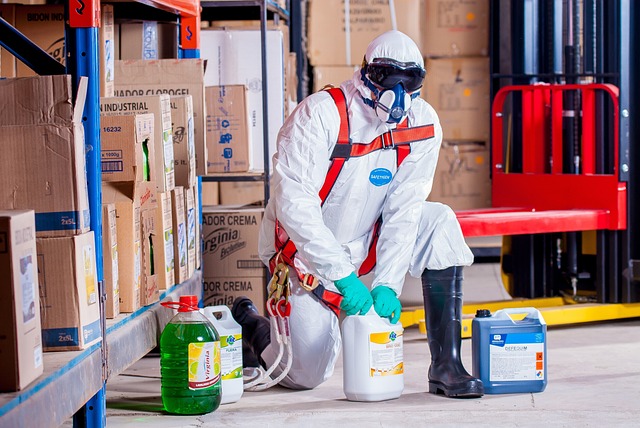Storing and Handling Chemicals
Most laboratories handle and use chemicals in some way or another.
According to the focus of the lab, compound production, research synthesis, basic types of acid digestions, etc., the amount and types of chemicals that are used often vary greatly. It is very unfortunate that reports involving incidents and accidents when it comes to storing and using chemicals is way too frequent. This is why it is important to maintain diligence in the correct storage and handling of hazardous materials to avoid problems from arising. This is why we have dedicated this post to provide the standard safety rules for storing and handling chemicals in laboratory settings.
Before we dive in, it’s essential to consider many of the regulations that often include very specific requirements on how to store or handle chemicals in stockrooms or labs. These are requirements that might range from specific types of waste containers and storage cabinets with locks to more stringent requirements such as controlled access to regulated areas. If you have laboratories that generate or use substances that are potentially hazardous, you need to establish which of the regulations apply as well as the exact requirements they might impose.
Another hurdle that is encountered often is that laboratories tend to change or evolve over time. This is why it is important to pay attention to our laboratory facilities as well as include consistent review processes to make sure the overall safety in our laboratories is up-to-date.
To Begin with, the Correct PPE (Personal Protective Equipment)
The main aim of this post involves how to store chemicals safely. But before you start rounding up your chemical bottles and reorganising your lab, you first need to ensure you are using the correct PPE. One of the minimum requirements should include closed-toe shoes (vital for working in labs), and the appropriate eye protection and chemical-resistant gloves. Your PPE gear should also include chemical aprons or lab coats.
It is also important to assess your surroundings, taking notes of potential trip hazards and where workstations are located where other workers are busy. Ensure that emergency-equipment areas (safety and eyewash showers), passageways, and exits are free and clear of storage materials.
Second – Safe Transport
Below are our tips on how to move chemicals safely:
- When you transport chemicals, the bottles should be placed in the correct secondary leak-proof containers that will provide protection against spillage and breakage.
- Always use barrel pumps for transferring liquids. This tool is ideal for all of your needs in chemical transfer and more.
- When you move large, heavy, or multiple containers, make sure you are using sturdy carts.
- Use a freight elevator when moving chemicals classified as hazardous, when possible, in order to prevent a potential incident on a crowded passenger elevator. Remember to take off your gloves when opening doors or pushing an elevator button.
- Chemicals should never be left unattended.
General Rules for Storing Chemicals
Storing chemicals safely in a stockroom or lab requires careful consideration and diligence. Using lab equipment and containers correctly is vital. Here are the steps to follow on how to safely store chemicals:
- All chemical containers must be labelled. We suggest including the user’s or owner’s name and the date it was received.
- A storage space should be dedicated to each chemical, and it must be returned to the same space after every use.
- Odoriferous and volatile toxic chemicals must be stored in a ventilated cabinet.
- Flammable liquids must be stored in a flammable-liquid approved storage cabinet. Flammable liquids in smaller amounts could be stored in open rooms. Make sure you have confirmed with local authorities (i.e., EH&S personnel or fire marshals) about the allowable limits.
- Make sure containers are sealed tightly to stop vapors from escaping.
- Use a designated refrigerator to store chemicals. Label the refrigerator Storage For Chemicals Only – No Food.
Here are things you should avoid:
- Storing liquids, heavy or large containers in a high cabinet or on a high shelve.
- Storing bottles directly on a floor unless they are in a secondary container.
Storing items along the tops of cabinets. Make sure there is a minimum of 18-inch clearance around the sprinkler heads to prevent obstruction or interference with your fire-suppression system.
Follow these easy steps to help you to achieve a safely operating, organised and efficient laboratory. Ignore these tips, and you run the risk of devastating accidents happening. Safety should always come first.
